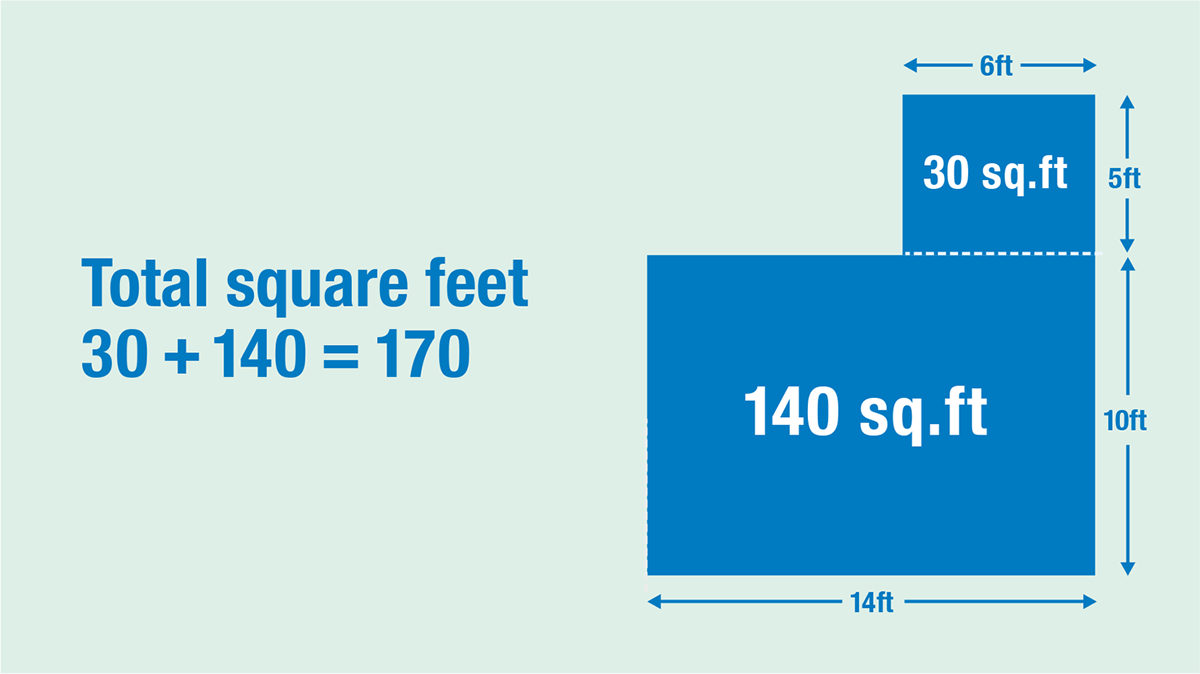Picture this: You’ve finally decided to upgrade your tired old flooring. The sleek hardwood, the plush carpet, the cool and modern tile – the possibilities are endless! But before you get swept away by the excitement, there’s a crucial step you need to take: calculating the square footage of your space. This isn’t some arcane math problem reserved for engineers. Knowing how to calculate square footage is simple yet vital for ensuring you buy the right amount of flooring, saving you money, stress, and possibly even a trip back to the store for more.

Image: mromavolley.com
So, let’s dive in and demystify the art of calculating square footage, empowering you to tackle this crucial step with confidence and precision.
Understanding the Basics: Square Footage 101
At its core, square footage is the measurement of a two-dimensional area, like your living room or kitchen, expressed in square units – most commonly, square feet. Calculating square footage is as simple as multiplying length by width. But before we jump into the calculations, let’s brush up on some essential terms:
Length: The distance from one end of a space to the other.
Width: The distance from one side of a space to the other.
Square Foot: A unit of measurement equal to a square with sides measuring one foot each.
Ready to Calculate? Here’s Your Step-by-Step Guide:
-
Gather Your Tools: Armed with a measuring tape, paper, and a calculator, you’re ready to conquer this flooring challenge! For accuracy, choose a tape measure with clear, easy-to-read markings.
-
Measure Your Space: Carefully measure the length and width of your chosen area. For rectangular rooms, you can usually measure end-to-end and side-to-side. Don’t forget to measure any protruding features like bay windows or alcoves. Remember to record your measurements in feet, since square footage is measured in square feet.
-
Calculate Your Square Footage: Now comes the simple arithmetic! Multiply the length by the width of your space.
For example:
- Length: 12 feet
- Width: 10 feet
- Square Footage: 12 x 10 = 120 square feet
- Add Up Irregular Areas: Your space might have some quirks, like a bump-out or an odd angle. To figure out the square footage of these areas, break them down into smaller rectangles or triangles.
- Rectangles: Repeat the length x width calculation for each section.
- Triangles: If you have a triangular space, measure the base and height. (The height is the perpendicular distance from the base to the opposite corner). Then, calculate: (1/2) x (base x height)
- Total it Up: Once you’ve calculated the square footage of all your rooms and any additional areas, simply add everything together for the grand total.
Let’s Make it Real: Real-World Applications
The calculations we just learned are the foundation for accurate flooring estimations. Understanding square footage helps you:
- Estimate Flooring Costs: Armed with your calculated square footage, you can contact flooring retailers and effortlessly get accurate price estimates for your project.
- Purchase the Right Amount: Avoiding overbuying (and wasting money) or underbuying (and having to make another trip) is essential. A well-calculated square footage ensures you get the exact amount you need.
- Plan for Installation: Knowing your square footage is crucial for planning installation, allowing you to order enough materials and schedule enough time for a smooth and efficient process.

Image: howtodiscuss.com
Pro Tips for Precision: Expert Guidance
- Double-Check Your Measurements: Accuracy is key! Measure twice, then triple-check to ensure you’ve captured the exact dimensions of your space.
- Factor in Waste: Always add a cushion of 10-15% to your calculated square footage to account for cuts, mistakes, and potential damage.
- Consult a Professional: If you’re grappling with complex shapes or unusual flooring choices, consider consulting a professional for expert guidance on precise square footage calculations.
How To Figure Out Square Footage For Flooring
Ready to Take Your Flooring Project to the Next Level?
Now you’re equipped with the knowledge and tools to calculate square footage, a crucial step in your flooring journey. Remember, understanding this simple math allows you to buy the right materials, stay on budget, and confidently tackle your project. So, grab your measuring tape, put your newfound knowledge to work, and start planning your dream floors!






